#Tucson Audubon
Photo
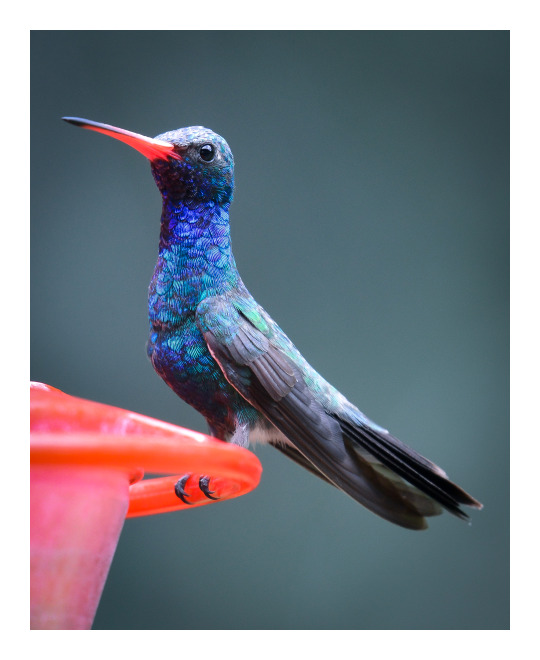
A bit of color on a gray day.
At the bird sanctuary I tend to use gemstone names to describe hummingbirds and their dominant colors to visitors. Usually just one will do. With broadbills the feather choices include sapphire, amethyst, ultramarine, and emerald – all in a jumble and all at once – and ruby for that unmistakable bill.
Adult male broad-billed hummingbird / colibrí pico ancho (Cynanthus latirostris), at the Paton Center for Hummingbirds, Patagonia, Arizona.
#photographers on tumblr#broad-billed hummingbird#hummingbird#Cynanthus latirostris#Paton Center for Hummingbirds#Tucson Audubon#Patagonia#Santa Cruz County#Arizona
211 notes
·
View notes
Text
Birds Near Tubac, Arizona
Birds Near Tubac, Arizona
Ash-throated Flycatcher Near Tubac Along The Santa Cruz River
Ash-throated Flycatcher Near Tubac Along The Santa Cruz River
Lesser Goldfinch In A Mesquite Tree
Albert’s Towhee — Images by kenne
One of the birding trips I went on during last month’s Tucson Audubon Society’s annual birding festival was to Tubac, which is located near the Santa Cruz River. These are a few of the better shots I…

View On WordPress
#Albert&039;s Towhee#Ash-throated Flycatcher#Emily Dickinson#Lesser Goldfinch#Mesquite#Photography#Poetry#Santa Cruz River#Tubac#Tucson Audubon
0 notes
Text
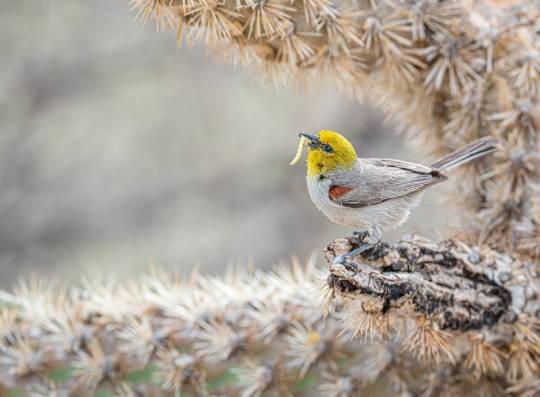
Verdin and cane cholla
Location: Sweetwater Wetlands, Tucson, Arizona, USA
by Linda Scher
Audubon Photography Awards
#linda scher#photographer#audubon photography awards#verdin#bird photographer#cane cholla#sweetwater wetlands#tucson#arizona#united states#nature
24 notes
·
View notes
Text
Zoos you can see bats at:
last updated: February 25, 2024
Have a zoo to add? Please send an ask, submissions in replies and reblogs get lost amid the numerous notes this blog gets.
-This blog is not affiliated with any zoos listed here
-A question mark next to information indicates missing or unverified information (and send an ask if you can fill in or verify information, please)
-Please send an ask if there are broken links.
**Guide to Accreditation Organization abbreviations**
AZA: Association of Zoos and Aquariums
APGA: American Public Gardens Association
WAZA: World Association of Zoos and Aquariums
IMATA: International Marine Animal Trainers Association
HC: Humane Conservation
ZAA: either the Zoological Association of America or the Australasian Zoo and Aquarium Association
BIAZA: British and Irish Association of Zoos and Aquariums
AMMPA: Alliance of Marine Mammal Parks and Aquariums
EAZA: European Association of Zoos and Aquaria
CAZA: Canadian Accredited Zoos and Aquariums (AZAC in French)
**
**
Arizona (US)
Arizona-Sonora Desert Museum (AZA) - Tucson - Pallid Bat? - https://www.desertmuseum.org/
**
Colorado (US)
Denver Zoo (AZA, WAZA, HC) - Denver - Common Vampire Bat - https://denverzoo.org/
**
California (US)
San Diego Zoo (AZA) - San Diego - Rodrigues Fruit Bat - https://sandiegozoowildlifealliance.org/
Oakland Zoo (AZA) - Oakland - Island Flying Fox, Malayan Flying Fox - https://www.oaklandzoo.org/
**
Florida (US)
Jacksonville Zoo and Gardens (WAZA, AZA) - Jacksonville - Seba's short-tailed bat, Straw-colored fruit bat, Common Vampire Bat - https://www.jacksonvillezoo.org/
Lubee Bat Conservancy (AZA) - Gainesville - Various different species - https://www.lubee.org/
Animal Kingdom at Disney World (AZA) - Orlando - Malayan Flying Fox - https://disneyworld.disney.go.com/destinations/animal-kingdom/
**
Idaho (US)
Zoo Boise (AZA) - Boise - Indian Flying Fox, Ruwenzori Long-haired Fruit Bat - https://zooboise.org/
**
Illinois (US)
Brookfield Zoo (HC, AZA) - Brookfield - Rodrigues Fruit Bat - https://www.czs.org/Brookfield-ZOO/Home.aspx
Lincoln Park Zoo (AZA) - Chicago - Egyptian Fruit Bat - https://www.lpzoo.org/
**
Kentucky (US)
Louisville Zoo (AZA) - Louisville - Common Vampire Bat, Rodrigues Fruit Bat - https://louisvillezoo.org/
**
Louisiana (US)
Audubon Zoo (AZA) - New Orleans - Seba's short-tailed bat, Common vampire bat - https://audubonnatureinstitute.org/zoo
BREC's Baton Rouge Zoo (AZA?) - Baton Rouge - Indian Flying Fox - Currently in the process of regaining AZA accrediation, expecting an update in Spring 2024 - https://brzoo.org/
**
Massachusetts (US)
Capron Park Zoo (AZA) - Attleboro - Rodrigues Fruit Bat, Indian Flying Fox - https://capronparkzoo.com/
Franklin Park Zoo (AZA) - Boston - Straw-colored Fruit Bat - https://www.zoonewengland.org/franklin-park-zoo/
Stone Zoo (AZA) - Stoneham - Seba's short-tailed bat - https://www.zoonewengland.org/stone-zoo/
**
Michigan (US)
Detroit Zoo (AZA, WAZA) - Royal Oak - Straw-colored fruit Bat - https://detroitzoo.org/
**
Maryland (US)
Maryland Zoo (AZA) - Baltimore - Seba's Short-tailed Bat - https://www.marylandzoo.org/
**
Minnesota (US)
Minnesota Zoo (AZA, WAZA, IMATA) - Apple Valley - Egyptian Fruit bat, Straw-colored fruit bat, Long-haired fruit bat - https://mnzoo.org/
**
Nebraska (US)
Omaha's Henry Doorly Zoo and Aquarium (AZA, WAZA) - Omaha - Short-tailed Fruit Bat, Common Vampire Bat, Egyptian Flying Fox - https://www.omahazoo.com/
**
New York (US)
Bronx Zoo (AZA) - Bronx - Rodrigues Fruit Bat - https://bronxzoo.com/
Prospect Park Zoo (AZA) - Brooklyn - Rodrigues Fruit Bat - https://prospectparkzoo.com/
Central Park Zoo (AZA) - New York City - Short-tailed Fruit Bat, Rodrigues Fruit Bat - https://centralparkzoo.com/
**
North Carolina (US)
North Carolina Zoo (AZA) - Asheboro - Common Vampire Bat - https://www.nczoo.org/
**
Ohio (US)
Akron Zoo (AZA, APGA) - Akron - Rodrigues Fruit Bat, Seba's Short-tailed Bat, Straw-colored fruit bat - https://www.akronzoo.org/
Cincinnati Zoo and Botanical Garden (AZA) - Cincinnati - Indian Flying Fox, Common Vampire Bat - https://cincinnatizoo.org/
Columbus Zoo and Aquarium (AZA, ZAA, AMMPA) - Powell - Large Flying Fox - https://www.columbuszoo.org/
**
Oregon (US)
Oregon Zoo (AZA, WAZA) - Portland - Rodrigues Fruit Bat, Straw-colored Fruit bat - https://www.oregonzoo.org/
**
Pennsylvania (US)
National Aviary (AZA) - Pittsburgh - Malayan Flying Fox - https://www.aviary.org/
Philadelphia Zoo (AZA) - Philadelphia - Rodrigues Fruit Bat, Common Vampire Bat - https://www.philadelphiazoo.org/
Pittsburgh Zoo (ZAA, HC, AMMPA) - Pittsburgh - Jamaican Fruit Bat - https://www.pittsburghzoo.org/
**
Texas (US)
Cameron Park Zoo (AZA) - Waco - Jamaican Fruit Bat - https://www.cameronparkzoo.com/
Dallas World Aquarium (AZA, WAZA) - Dallas - Common Vampire bat, Seba's Short-tailed bat - https://dwazoo.com/
Houston Zoo (AZA) - Houston - Seba's Short-tailed Bat - https://www.houstonzoo.org/
**
Tennessee (US)
Memphis Zoo (AZA, WAZA) - Memphis - Common Vampire Bat, Seba's Short-tailed Bat, Egyptian Fruit Bat, Bulldog Bat - https://www.memphiszoo.org/
**
Virginia (US)
Metro Richmond Zoo (ZAA) - Moseley - Straw-colored Fruit bat, Indian flying fox - https://metrorichmondzoo.com/
**
Wisconsin (US)
Henry Vilas Zoo (AZA, WAZA) - Madison - Seba's Short tailed bat - https://www.henryvilaszoo.gov/
Milwaukee County Zoo (AZA) - Milwaukee - Common Vampire Bat, Straw-colored Fruit Bat - https://milwaukeezoo.org/
Bay Beach Wildlife Sanctuary - Green Bay - Not a zoo, included here because they are open to the public; it is the largest park in the Green Bay Park System and the home of the second largest wildlife rehabilitation program in the state; Accreditation unclear, Sanctuary is run by the city government - Various species native to the area - https://greenbaywi.gov/1418/Bay-Beach-Wildlife-Sanctuary
**
Washington (US)
Woodland Park Zoo (AZA, HC) - Seattle - Indian Flying Fox - https://www.zoo.org/
**
United Kingdom
Northumberland Zoo (BIAZA) - Morpeth, Northumberland - Livingstone’s Fruit Bat - https://www.northumberlandzoo.co.uk/
Chester Zoo (BIAZA, WAZA, EAZA) - Upton-by-Chester, Cheshire - Rodrigues Fruit Bat - https://www.chesterzoo.org/
West Midland Safari and Leisure Park (BIAZA, EAZA) - Bewdley, Worchestershire - Rodrigues fruit bat, Seba's short-tailed bat - https://www.wmsp.co.uk/
Jersey Zoo (BIAZA) - Jersey - Livingstone's Fruit Bat - https://www.durrell.org/visit-jersey-zoo/
ZSL London Zoo (EAZA, BIAZA) - London, England - Rodrigues fruit bat - https://www.londonzoo.org/
**
Australia
Taronga Zoo (ZAA) - Sydney, New South Wales - Ghost Bat - https://taronga.org.au/sydney-zoo
Perth Zoo (ZAA, WAZA) - Perth, Western Australia - Ghost Bat - https://perthzoo.wa.gov.au/
Tolga Bat Hospital - Atherton, Queensland - Not a zoo, they are included here because they do tours of their facilities; They are accredited by different organizations than zoos. - Various species native to Australia - https://tolgabathospital.org/
**
Czechia
Prague Zoo (EAZA) - Prague, Czechia - Straw colored fruit bat - https://www.zoopraha.cz/en
**
Canada
Toronto Zoo (AZA) - Toronto, Ontario - Straw-colored fruit bat - https://www.torontozoo.com/
Biodôme (CAZA, WAZA, AZA) - Montreal, Quebec - Jamaican Fruit bat, Seba's Short-tailed bat, Pallas's Long-tongued bat - https://espacepourlavie.ca/en/biodome
Vancouver Aquarium (AZA, CAZA, AMMPA, HC) - Vancouver, British Columbia - Jamaican Fruit Bat - https://www.vanaqua.org/
**
Croatia
Zoo Zagreb (EAZA?) - Zagreb - Egyptian Fruit Bat - https://zoo.hr/english/
**
241 notes
·
View notes
Photo

Phainopepla, male, Tucson, Arizona, USA
Photograph by Mick Thompson, Eastside Audubon CC
38 notes
·
View notes
Text
91 notes
·
View notes
Text
The Center for Biological Diversity and Maricopa Audubon Society sued the U.S. Bureau of Land Management and Fish and Wildlife Service today for failing to protect habitat for the endangered Southwestern willow flycatcher and Western yellow-billed cuckoo from cattle grazing damage along Arizona’s Gila River.
“This lawsuit will force federal agencies to follow their own rules and finally protect the Gila River’s fragile endangered species habitat from destructive livestock grazing,” said Taylor McKinnon, Southwest program director at the Center for Biological Diversity. “Livestock grazing decimates the streams that struggling species depend on and these federal agencies have repeatedly failed to protect endangered species habitat. This has to end before more wildlife slides into extinction.”
Today’s lawsuit, filed in U.S. District Court in Tucson, targets seven grazing allotments spanning 15 miles of the river downstream from Coolidge Dam.
Field surveys in 2022 and 2023 documented open gates, downed fences, unauthorized cattle and extensive damage to the Gila River’s riparian vegetation, where up to 92% of the surveyed critical habitat for the cuckoo and flycatcher was significantly damaged by livestock grazing. The Center filed two notices of intent to sue the agencies following the surveys but grazing continued.
2 notes
·
View notes
Text
U.S. District Court upholds protections for endangered Southwestern willow flycatcher bird
New Post has been published on https://petn.ws/YLfWq
U.S. District Court upholds protections for endangered Southwestern willow flycatcher bird
A U.S. District Court upheld protections for the Southwestern willow flycatcher bird after the New Mexico Cattle Growers’ Association sought to remove the animal from the endangered species list. The Maricopa Audubon Society and Tucson-based Center for Biological Diversity acted as third parties in support of maintaining protections. U.S. Fish and Wildlife Service A southwestern […]
See full article at https://petn.ws/YLfWq
#BirdNews
0 notes
Text
Forecasting the future to help protect monarch butterflies
https://sciencespies.com/nature/forecasting-the-future-to-help-protect-monarch-butterflies/
Forecasting the future to help protect monarch butterflies
The outlook for monarch butterflies isn’t great right now. In fact, the International Union for the Conservation of Nature, or IUCN, just added North America’s monarchs to its list of endangered species.
With news like this, it can be easy to overlook the reasons to be hopeful that we can protect these iconic insects from extinction. But those bright spots are there if people know where to look.
Now, there are forecasts to help guide conservation, thanks to Michigan State University’s Elise Zipkin and her colleagues.
Working with extensive data sets and established models, the team has forecasted which counties in the midwestern U.S. and Ontario, Canada, are most likely to offer the most hospitable breeding grounds for monarchs in the face of climate change. These forecasts, published Aug. 19 in the journal Global Change Biology, can help identify where the greatest opportunities to support monarch conservation may be.
“These projections let us look at how monarch populations will change across the Midwest and say, ‘Here’s where they’ll likely do a little better, here’s where they might do a little worse,'” said Erin Zylstra, the first author of the new report and a former postdoctoral researcher in the Zipkin Quantitative Ecology Lab.
The Midwest is an important summer breeding area for eastern monarch butterflies. Over the course of a year — and four generations — monarchs migrate between central Mexico and parts of the U.S. and southern Canada east of the Rocky Mountains.
advertisement
But between 1996 and 2014, the eastern monarch population has decreased by more than 80%. Last year, Zylstra, Zipkin and their colleagues published a paper showing that climate conditions were the major driver of recent declines.
Building on that 2021 study, the team took its understanding of how climate influenced monarch populations since 2004 and used that to forecast what could happen over the next 80 years under a range of climate change scenarios.
“Climate change is a huge global problem that requires nations working together to solve. When we talk about conservation, though, we tend to want to know what we can do in our local communities,” said Zylstra, who is now a quantitative ecologist with the Tucson Audubon Society in Arizona. “If we can find the places where the impacts of climate change aren’t expected to be so bad, those could become the areas where we invest our resources.”
“In general, our research is informed by asking what are the conservation needs,” said Zipkin, the senior author of the study and an associate professor in the College of Natural Science’s Department of Integrative Biology. She’s also the director of the Ecology, Evolution and Behavior Program, a pillar of MSU’s overall ecology program, which was recently ranked No. 32 globally.
Zipkin and Zylstra’s latest work was supported by the National Science Foundation and U.S. Geological Survey’s Midwest Climate Adaptation Science Center, which facilitates partnerships between scientists, community leaders and natural resource managers.
advertisement
“We’re answering scientific questions that we think are important, but we are also working with on-the-ground individuals and agencies that can use our work to implement strategic conservation,” Zipkin said. “The Midwest Climate Adaptation Science Center helps us get our research directly into the hands of those people who are thinking about next steps.”
Another unique feature of the work is how it considers sources of uncertainty and provides quantitative estimates for those, the researchers said. This approach — which explicitly considers what is unknown about the future — can help the research community better understand and utilize the team’s results and models. It also helps researchers identify what’s needed to improve the precision of future forecasts.
For example, unknowns about future climate are the largest source of uncertainty as the team forecasts what monarch populations will look like at the end of the 21st century. But in the immediate future, uncertainties about exactly how specific climate variables influence local monarch population abundances loom large. Collecting more robust, targeted monarch data could thus improve projections in the short term.
In the meantime, Zylstra and Zipkin have presented their best and most data-informed forecasts in collaboration with Naresh Neupane, a climate scientist at Georgetown University. The team forecasted monarch population changes in counties throughout the summer breeding grounds and on the overwintering grounds in Mexico under four different climate scenarios.
In each scenario, the forecasts suggest that the eastern monarch population will continue to decline, which is not surprising given the butterflies’ current trajectory. But identifying the pockets where, locally, populations are growing or holding constant provides hope that the decline can be slowed or reversed.
And if the approach helps save monarchs, it can help with other threatened species, too.
“Monarchs are special. They’re beautiful, easy to identify, widely distributed and they get people to care about conservation in general,” Zipkin said. “Absolutely, with action, we can protect our planet, we can protect other migratory species, we can protect pollinators and we can protect monarchs.”
#Nature
0 notes
Text
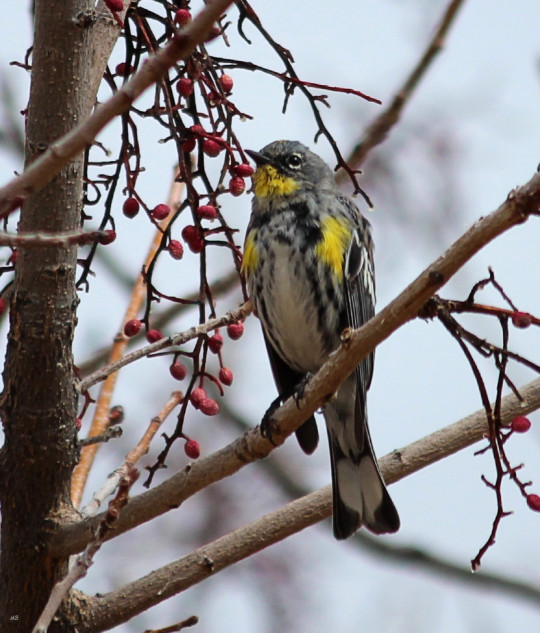
Audubon's Yellow Rumped Warbler Reid Park Tucson, AZ March 2021
#audubons yellow rumped warbler#warbler#birds#wildlife#reid park#tucson#arizona#photographers on tumblr#canon t3i#my photography
24 notes
·
View notes
Photo
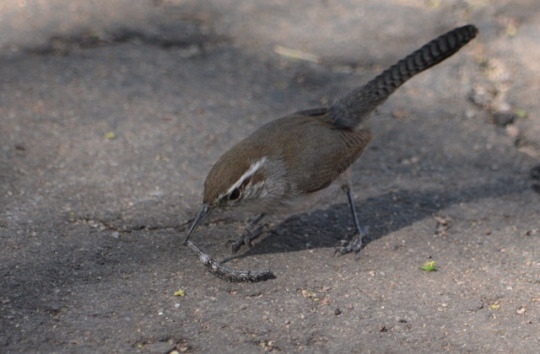


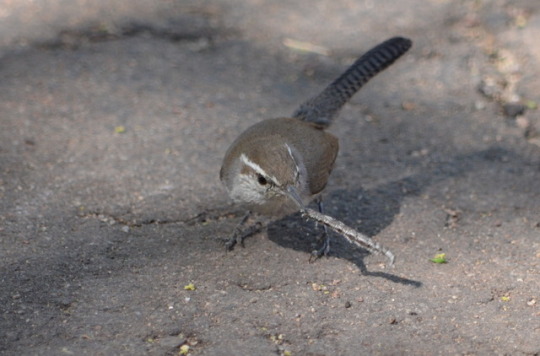
Bewick’s wren in Agua Caliente Park
34 notes
·
View notes
Photo

Untitled.
#photographers on tumblr#American bullfrog#Lithobates catesbeianus#Paton Center for Hummingbirds#Tucson Audubon#Patagonia#Santa Cruz County#Arizona
105 notes
·
View notes
Text
Moon Over Sweetwater
Moon Over Sweetwater Wetlands Park, Tucson, Arizona — Image by kenne
A walk in the park
Audubon naturalists
Recording sighting
— kenne

View On WordPress
0 notes
Text
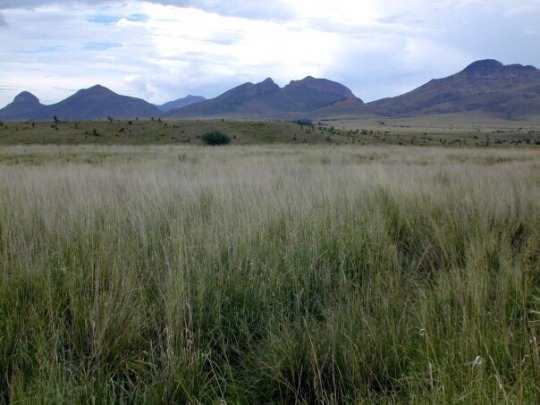
Laboratory
benjo in Sonoita, Arizona
5 notes
·
View notes
Link
youtube
Excerpt from this story from the Center for Biological Diversity:
The Center for Biological Diversity and Maricopa Audubon Society sued the U.S. Bureau of Land Management today to challenge widespread, destructive cattle grazing in streams and riparian areas of the Agua Fria National Monument in central Arizona.
The grazing is destroying habitat for a number of threatened and endangered species, including designated critical habitat for the Gila chub and western yellow-billed cuckoo.
“It’s appalling to see the widespread damage that cattle have inflicted on this beautiful national monument,” said Chris Bugbee, southwest advocate at the Center. “The Agua Fria River and Silver Creek are supposed to be protected from grazing, but we’ve repeatedly documented riparian areas that are filled with manure and trampled by cows. Federal officials have ignored this destruction and let cattle run rampant, so we’re hopeful a judge will force them to do their jobs and protect these fragile ecosystems.”
The Center has documented streams filled with cow manure, trampled streambanks and vegetation grazed to the roots, harming critical habitat for threatened yellow-billed cuckoo and endangered Gila chub. The monument was designated to protect riparian forests, grasslands and a diverse assortment of native wildlife, including more than 28 bird species with special conservation status.
The Agua Fria National Monument, created by presidential proclamation in 2000, is managed by the BLM. In 2009 the Arizona Game and Fish Department purchased Horseshoe Ranch and the grazing rights for the Horseshoe allotment, which are within the monument, to manage this habitat for endangered species.
“Even within a national monument, on a grazing allotment controlled by the Arizona Game and Fish Department and the BLM, the agencies can’t keep cows out of streams,” said Maricopa Audubon President Charles Babbitt. “Endangered species across the Southwest are in crisis because these agencies are unable or unwilling to protect the riparian habitats they depend on from cows.”
In the desert Southwest, livestock grazing harms threatened and endangered wildlife and is the primary driver of riparian ecosystem degradation. Removal of livestock from riparian areas is a critical component of adaptation to climate change. Perennial water on the Agua Fria River, which runs through the monument, has decreased dramatically over the past decade.
3 notes
·
View notes
Photo
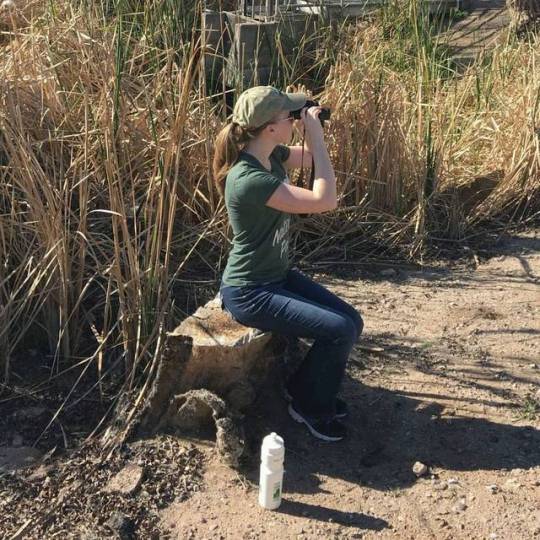
#nofilter #birding #outdoors #tucson #southeastarizona #arizona #nature #birds #audubon @audubonsociety
1 note
·
View note